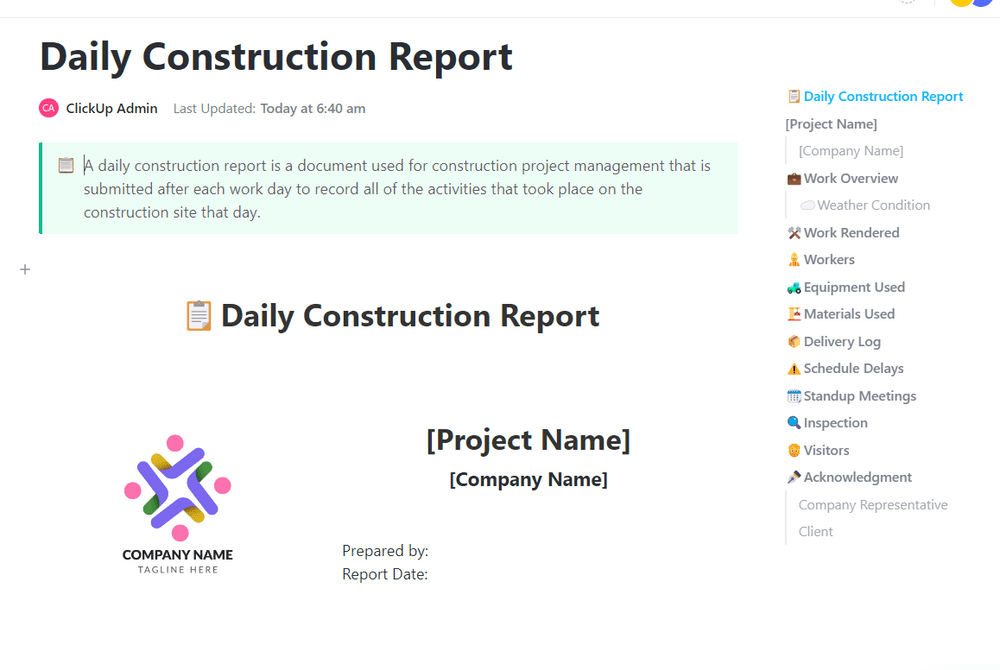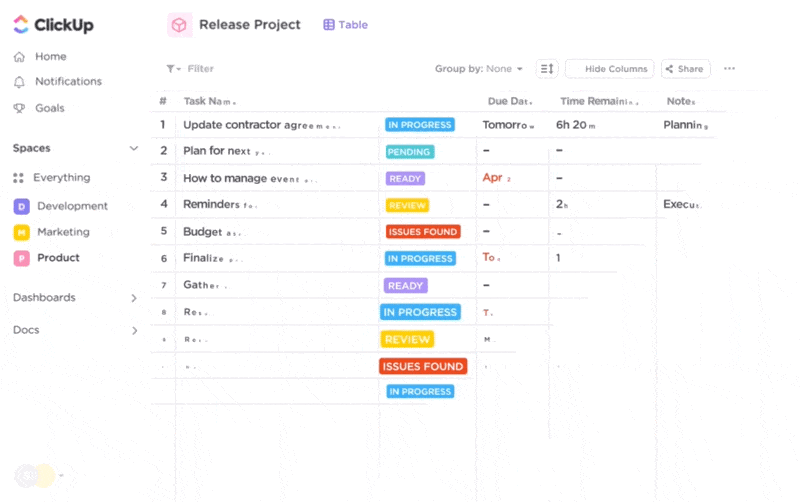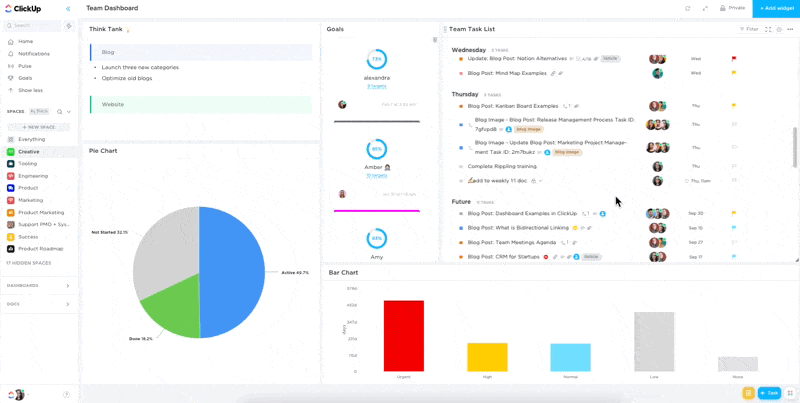

Project Portfolio Management: Process Essentials in PPM
Organizations face numerous challenges. One of them is how to manage various projects efficiently with limited resources.
The challenge gets tougher when you realize that each of your projects is unique and requires specific attention.
The scope of projects will include strategic growth with many risk factors and routine maintenance with simple tasks, making project management a balancing act. You will constantly need to determine which projects to invest in and direct resources while aligning the projects with your long-term goals.
Without a clear process for project portfolio management, there could be a need to hasten decisions, wasted resources, and missed chances.
Let’s dive deep into the essential processes for effective project portfolio management. Explore the core principles, strategies, and tools to enhance your PPM skills and optimize your organization’s project portfolio.
- What is Project Portfolio Management?
- Importance of Project Portfolio Management
- Who Benefits From Effective Project Portfolio Management?
- Project Portfolio Management Process
- What is a Project Portfolio Management Software?
- How to Use Project Portfolio Management Software?
- Keep Your Organization on Track With Project Portfolio Management
What is Project Portfolio Management?
Project portfolio management (PPM) takes a top-down approach to align each project goal with the organization’s. The focus is strategically selecting, prioritizing, and managing a collection of projects and allocating resources accordingly.
Its main objective is to maximize the value of the entire project portfolio, ensuring optimal resource allocation and alignment with strategic objectives. A Project Management Office (PMO) usually comprises project portfolio managers, project managers, and program managers.
How is project portfolio management different from project management?
Project portfolio management oversees the entire portfolio of projects, which involves adjustments to align with evolving and changing organizational priorities over the years.
On the other hand, project management involves planning, executing, and controlling individual projects, focusing on completing them within budget, on time, and with the desired outcome.
It deals with task-oriented details, including resource allocation, scheduling, risk management, and task execution, all within the project’s limited timeframe.
Importance of Project Portfolio Management
Project portfolio management (PPM) allows you to focus on the big picture and address challenges caused by multiple overlapping projects.
Let’s look at the benefits of project portfolio management:
Strategic alignment
PPM helps you choose projects and programs that match your company’s business strategy and goals and contribute the most to achieving these objectives.
Better decision-making:
PPM provides a framework for making project-related decisions, helping you choose the right projects to pursue.
It may involve discontinuing or reprioritizing projects that no longer align with strategic goals.
Resource optimization:
PPM helps you allocate your time and resources more efficiently across finances, human resources, and other strategic investments.
It prevents resource overextension and ensures that your resources are distributed where they create the most impact.
Risk management:
By assessing and managing risk at the portfolio level, PPM helps you make informed decisions.
It involves diversifying risk across multiple projects or reducing risk by addressing dependencies and resource constraints.
Communication and transparency:
PPM promotes better communication and transparency with visibility into the project selection and execution process, leading to buy-in from stakeholders.
Improved project success:
Effective PPM helps you find and invest in well-planned, well-executed, closely monitored projects, increasing the odds of project success and maximizing your ROI.
PPM contributes to your long-term success:
PPM looks beyond individual projects and focuses on your organization’s long-term success.
It helps you adapt to changing circumstances and ensures the project portfolio remains aligned with evolving strategic priorities.
Who Benefits From Effective Project Portfolio Management?
The benefits of project portfolio management (PPM) apply to organizations that handle multiple projects simultaneously. Here are some practical examples:
Financial Sector:
Banks, investment firms, and insurance companies regularly roll out new products, services, and schemes for their customers. PPM assists in launching and developing these products, managing customer databases, processing payments, and staying up-to-date with market trends.
It also helps financial organizations identify, mitigate, and diversify the substantial financial and regulatory risks they deal with.
Information Technology Companies:
IT companies use project portfolio management to choose and prioritize projects from their portfolio. PPM helps control various projects, from software development to cybersecurity and infrastructure management.
PPM helps monitor and control project expenses, prevent budget overruns, and ensure cost-effectiveness.
Construction Firms:
Construction firms handle big, long-term projects where the team can get off track due to changing conditions. They use PPM to monitor these projects, control costs, and meet deadlines.

PPM also helps construction companies prioritize multiple projects of varying sizes and complexities. PPM ensures that crucial projects receive the necessary focus and resources.
Manufacturing Industry:
Manufacturing industries use project portfolio management (PPM) to handle various projects.
These include product development, making processes more efficient, improving the supply chain, and ensuring products are delivered on time.
PPM helps them juggle these different projects effectively, ensuring they stay competitive and meet their goals.
Project Management Teams:
Project management teams are vital in any organization; they oversee projects, manage resources, and work closely with project managers.
To make their job easier and more effective, they use project portfolio management (PPM) to stay organized and ensure projects align with the company’s goals.
Public Sector:
Government agencies use PPM to make sure everything runs smoothly. This includes managing public databases and infrastructure projects, implementing policies, and improving services.
PPM helps them allocate resources wisely and keeps things transparent to serve the public effectively.
Health and Pharmaceutical Sectors:
Healthcare organizations and pharmaceutical companies use PPM to boost their performance.
It helps with quality improvement projects, developing new drugs, expanding facilities, and ensuring they meet market needs. The end goal is to provide better care for patients.
Project Portfolio Management Process
Now that we’ve covered the importance of portfolio management and how different industries use PPM, let’s break down the PPM process step by step:
Step 1: Identify your business objectives
Start by setting your organization’s goals and objectives. Identify the strategic targets your business wants to achieve, and pick projects that align with those goals.
Connect with key stakeholders and leaders to understand the company’s goals. This could be boosting revenue, expanding to new markets, or improving customer satisfaction. Then, map out how each project in your portfolio contributes to these goals.
Step 2: Collect and research project ideas for your portfolio
Collect project ideas from key stakeholders and department managers, research industry trends, and analyze customer feedback.
Evaluate projects based on specific criteria like alignment with company goals, potential ROI, resource needs, and risk factors before adding them to your portfolio.

Use ClickUp Dashboards to set up a space for your team to share ideas. As the next step, research and check the feasibility of these ideas to see if they can become projects.
Step 3: Validate the feasibility of your project portfolio
Analyze each project’s market conditions, technical and resource requirements, financial viability, potential risks, and expected returns. Then, compare these factors against your available resources and budget.
The projects aligning with your resource availability and strategic objectives will be considered feasible. Evaluate your projects critically to ensure they are realistic and achievable.
Step 4: Allocate your resources

Resource allocation is allocating your human resources, budgets, infrastructure, and time effectively to your projects.
Decide how much each resource will be allocated to specific projects to ensure success. Apportion limited resources to critical projects based on your priorities.
Step 5: Execute, manage, and monitor your project portfolio
This step involves putting your plans into action.
Assign teams and project managers, set timelines, and track the progress of your projects. Regular check-ins and reports help you stay on course and make adjustments as needed.
In project portfolio management, your role is to ensure everything runs smoothly. Guide the team to meet deadlines, handle conflicts, adjust the portfolio as trends change, and track project progress.
Regular reviews help you fine-tune and improve the process based on the gathered data.
If you’re looking for a centralized platform to plan, prioritize, monitor, and control your projects and initiatives, project portfolio management software is what you need.
What is a Project Portfolio Management Software?
Project portfolio management (PPM) software is a solution that helps you get a complete overview of the sustainability and progress of multiple projects.
It helps project portfolio managers like you handle complex projects efficiently to meet stakeholder demands.
Must-have features of project portfolio management software
The expectations for project portfolio management (PPM) software can vary among organizations, so choose software based on your unique needs.
PPM software typically includes various features like:
- Project Planning and Scheduling: This feature is essential to defining scope, prioritizing tasks, and setting timelines to improve project performance
- Resource Management: PPM software simplifies the analysis, allocation, and tracking of resources, ensuring they are used efficiently
- Financial Management: It is crucial to budget and track project costs to stay within the planned budgets
- Collaboration and Communication x: Collaboration across team members and stakeholders is essential to share ideas, provide feedback, and ensure seamless communication is another factor to consider
- Customization and Scalability: A PPM software that adapts to meet the unique requirements of your company, allowing flexibility as needs change is essential to manage your project portfolio
Types of project portfolio management software
PPM software falls into two categories: desktop and cloud-based. Select the one that works best for your organization’s needs and preferences.
Desktop PPM software
Desktop PPM software is a project portfolio management software that operates offline. You can use it without an internet connection, which is handy for companies with projects in remote areas.
One key advantage is the level of security and control it provides. You have full ownership and control over your data, reducing data privacy and security worries.
Cloud-based PPM software
Cloud-based PPM software is a project portfolio management tool accessible from anywhere with an internet connection. This makes it great for professional services teams, as you can access project data in real-time.
Team members can collaborate and share updates instantly. Plus, it often uses a subscription model, so you pay in smaller installments, giving you more cost flexibility compared to one-time, hefty fees.
How to Use Project Portfolio Management Software?
The features of PPM software and the steps required to use it will vary depending on the one you pick.
We’ll use ClickUp as an example in this section because it offers versatile and user-friendly project portfolio management tools, delivering excellent project management solutions.
1. Create a ClickUp Workspace
Start with ClickUp by signing up for free and creating a ClickUp Workspace for your project portfolio.
2. Add the project portfolio management template

After creating your Workspace, add ClickUp’s Project Portfolio Management Template. This template offers nine statuses: in progress, ready, complete, and more.
The Project Portfolio Management Template also provides three views (Weekly Status Reports, Team, and PMO Roadmap) to clearly show your project’s progress and success.
3. Customize the template

Customize the template structure using Spaces, Folders, and Lists.
ClickUp’s Tasks help you manage project tasks. You can categorize projects into manageable tasks into existing, in-progress, new, and future projects.
4. Use ClickUp’s Table View for an overview of your project portfolio

You need to have a clear vision of your projects alongside planning and initiation. ClickUp’s Table View offers some handy features:
Data Visualization: Presents your project data in a table format to help you organize and structure them for a better view of progress.
Drag and Drop: Rearrange tasks to sort them based on different criteria.
Export and Share: Share project information with your stakeholders instantly.
5. Use ClickUp Dashboard for detailed insights on your projects

ClickUp’s Dashboards is your go-to visual workspace to get detailed project insights for centralized management.
Choose from over 50 widgets to add and arrange on your program management dashboard, creating a clear and informative view of your PPM data.
Take an advertising agency, for instance, managing numerous client campaigns. They can streamline their PPM process with ClickUp Dashboards. By creating dashboard layouts, they get:
- A project overview widget displaying various project metrics
- A progress tracking widget to visualize how much each project has advanced
- A time-tracking widget for a visual representation of project timelines, enabling efficient project scheduling
Keep Your Organization on Track With Project Portfolio Management
Project Portfolio Management (PPM) software is a navigational tool that helps your organization move closer toward your business goals and objectives.
It helps you identify what makes each project in your portfolio different and how to create a balance when selecting and executing your projects.
Whether you opt for multiple platforms or go all-in with ClickUp, make sure to set yourself up for successful project outcomes. Start with ClickUp for FREE and take control of your project portfolio!


Questions? Comments? Visit our Help Center for support.